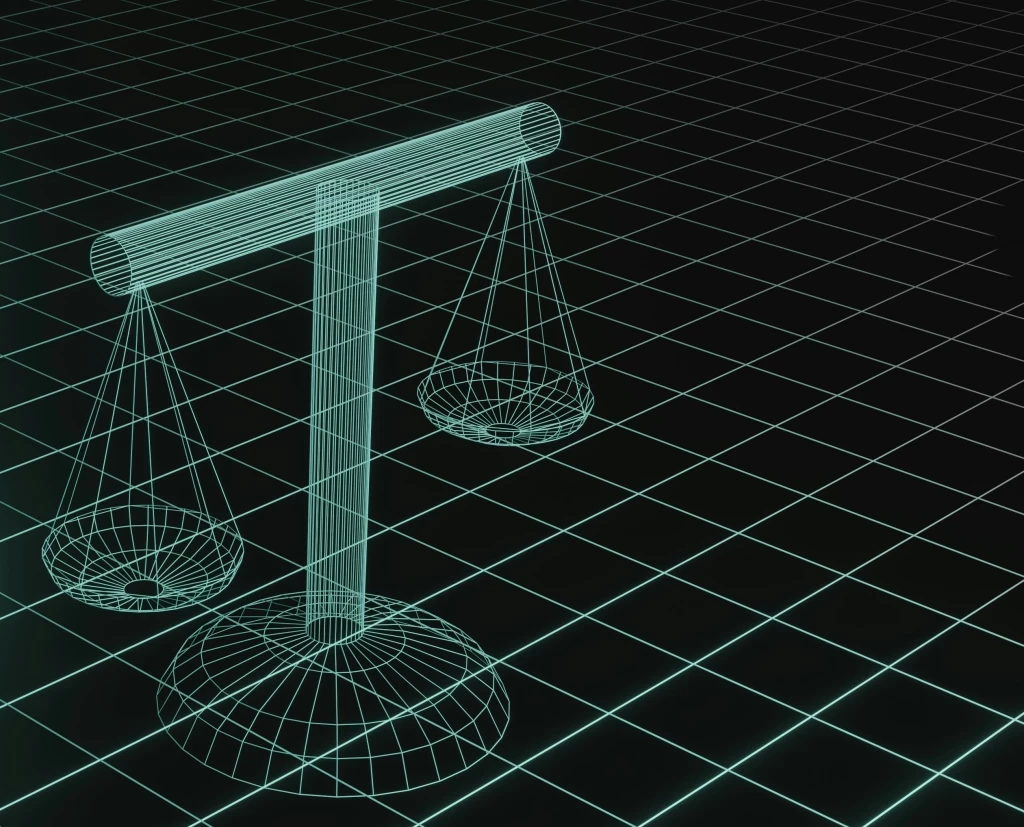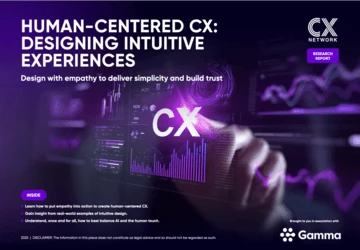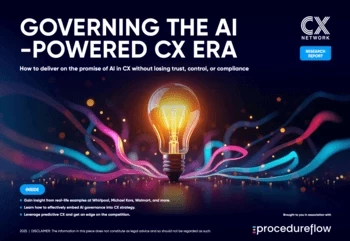How Conduent prepares customers for automation
John Mackey delves into how Conduent prepares customers for automation with a process for seamless automation adoption
Add bookmark
Artificial intelligence (AI) and automation offer exciting opportunities for customer experience (CX) teams, but adoption often comes with challenges. To learn more, CX Network spoke with Conduent at the CCW UK Summit about how it helps clients successfully prepare for automation. John Mackey, global CXM growth and enablement executive at Conduent explored the "crawl, walk, run" approach to preparing clients for automation. He also discussed evolving customer expectations, predictive analytics and the line between "creepy versus cool" in personalization.

Don't miss any news, updates or insider tips from CX Network by getting them delivered to your inbox. Sign up to our newsletter and join our community of experts.
In a quickly evolving CX technology landscape, it can be tempting to dive straight into the deep end, striving to keep up with innovation and customer demand. But in the race to modernize, many skip the most critical step: preparing their customers and their operations for sustainable change.
CX Network: What would you say are the biggest changes in customer expectations in 2025?
JM: The immediacy and the expectation that you should be able to solve their problem right now: “You know me, I’m your customer, why would you have to call me back or text me later?” First call resolution (FCR) has always been big, but that FCR might take you an hour to get to and now customers expect it in 5 minutes. The accuracy of the information, the immediacy of the information, is higher than ever.
CX Network: How do you advise your clients to approach that challenge?
JM: [Our clients] are asking that question because they are fighting that battle. They might have six other partners with six other experiences going on at once, so they are trying to figure out their culture.
We deal with some clients that are Fortune 100 companies with 30,000 agents, and I think the only way you can do it is by going in and building credibility with them. It will come down to operations to start because almost every engagement on the CX side is going to start with agents. You must prove to your clients that you are a master of agents, and you must retain agents. Once you get to that point, if you have put credibility first, then you can focus on scaling automation projects. From there, you will start standing out because you have done things the right way to begin with.
You learn your client’s culture, and you learn what they are trying to do and build off that: crawl, walk, run.
CX Network: How do you convince your clients to start small or “crawl”?
JM: You need to bring in your experience and show your clients how the “crawl, walk, run” methodology works and why it works. Clients often want to go straight to the “running” stage of automation. However, if you start saying, “I worked with three companies of a very similar size to your company, and we started small and then built off that foundation, and now they are reaping massive benefits,” it becomes easier to convince them.
When companies try and go straight to “running”, but skipping over everything else, their customers often are not ready for it. Adaptation is huge, so if you did not prepare your customers for automation, you might have the best tool in the world, but you won't be using it to its full potential.
CX Network: So, how can brands prepare their customers for that next stage in automation?
JM: It all comes down to the insights of the outcomes of the progressive states of crawling, walking and running. You must show your customers that, as you are making incremental changes, customer outcomes are improving – incrementally.
You will end up using fewer agents to do more, giving your customers more immediate answers, which will be more accurate because you’re relying on the tech. Eventually, you can progress toward using agent assist, surpassing the need for a human agent in most cases but our approach is ultimately to empower the agents to be able to be more efficient, more accurate and more focused on the interaction than finding the answer.
Internally, you show your ROI along your automation journey. You will start seeing efficiency gains and quality gains, which are intrinsically more valuable than whatever you’re paying for the tech because this is your brand, your reputation.
CX Network: What about predictive CX?
JM: I think that the next step is no contact resolution. If agents can look at a customer’s history, and AI can flag potential background issues, the agent should be able to reach out before the customer ever calls.
You may even know that there is an issue on the horizon, and you can then solve it beforehand. That’s using predictive analytics. In the healthcare context, if there are customers that are similar in life experiences and health experiences, you can predict what each customer’s next actions will be.
CX Network: How can companies walk the line between "creepy versus cool" in predictive CX and personalization?
JM: If you start looking at the way customers usually contact you, you start understanding the ways in which they want to be contacted. It becomes less “creepy” because we know, for instance, that when a customer has communicated with us via the chat function the last four times they had a question, we can probably just chat [with] them. There will always be outliers who will prefer the call channel, but most of your customers will be happy with you contacting them via their usual chosen channels.
CX Network: What do you think the future holds for contact centers?
JM: I think we’re always going to have human agents. The focus should be on making their lives easier and empowering them to do more. AI agents will come in to deal with low hanging fruit, such as very transactional calls which can be automated.
I think we are heading toward a world where you might chat, or you may even call and be talking to an autonomous IVR, and you will think you are talking to a person. That technology is only going to get better and better.
Other technology, such as virtual reality goggles, will likely become more popular too, especially in fields such as healthcare in which it can be used to perform virtual checkups.
Quick links:
- How Ericsson supercharged their NPS score
- Why customer intimacy is the future of CX
- A deep dive on CX strategies




















